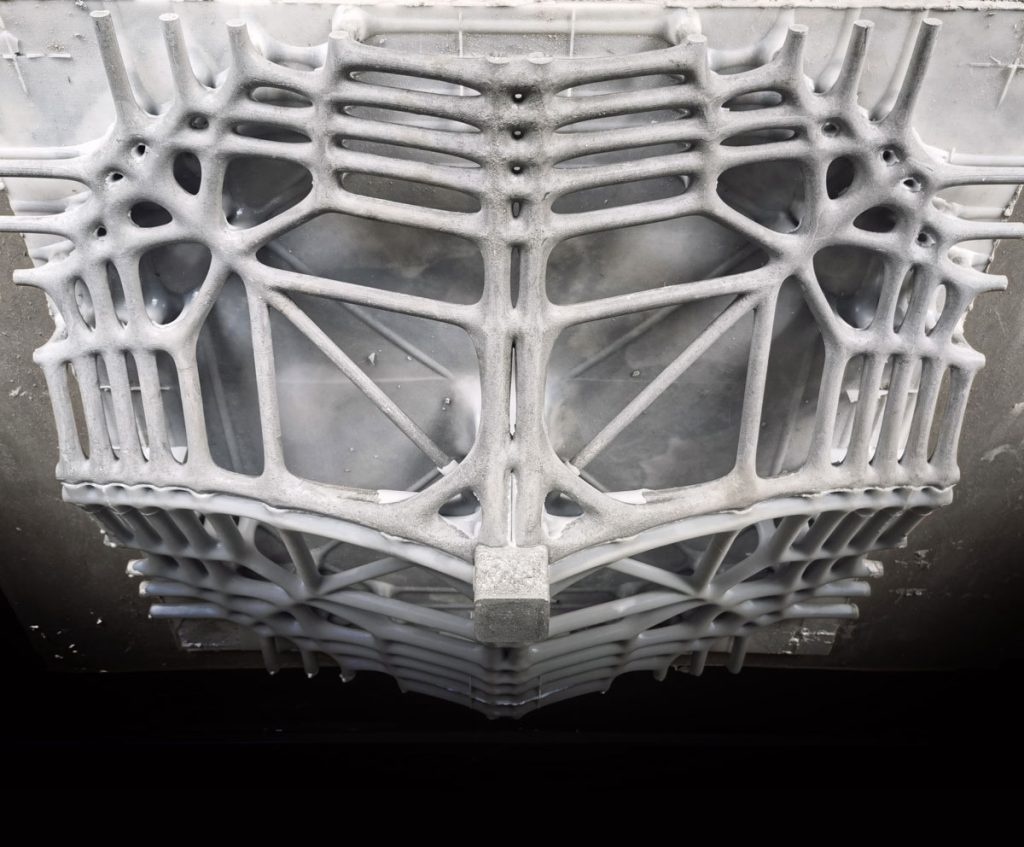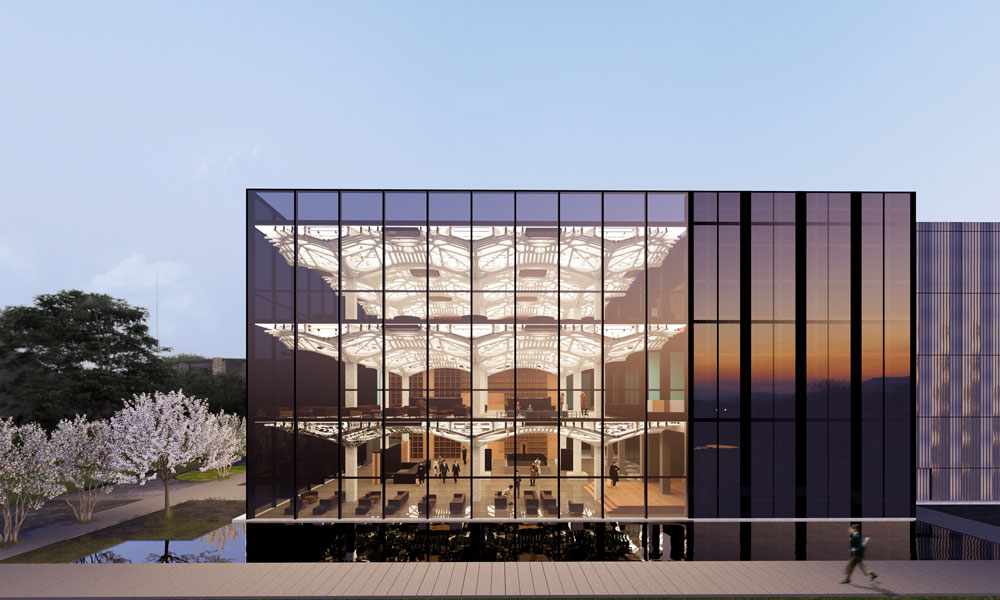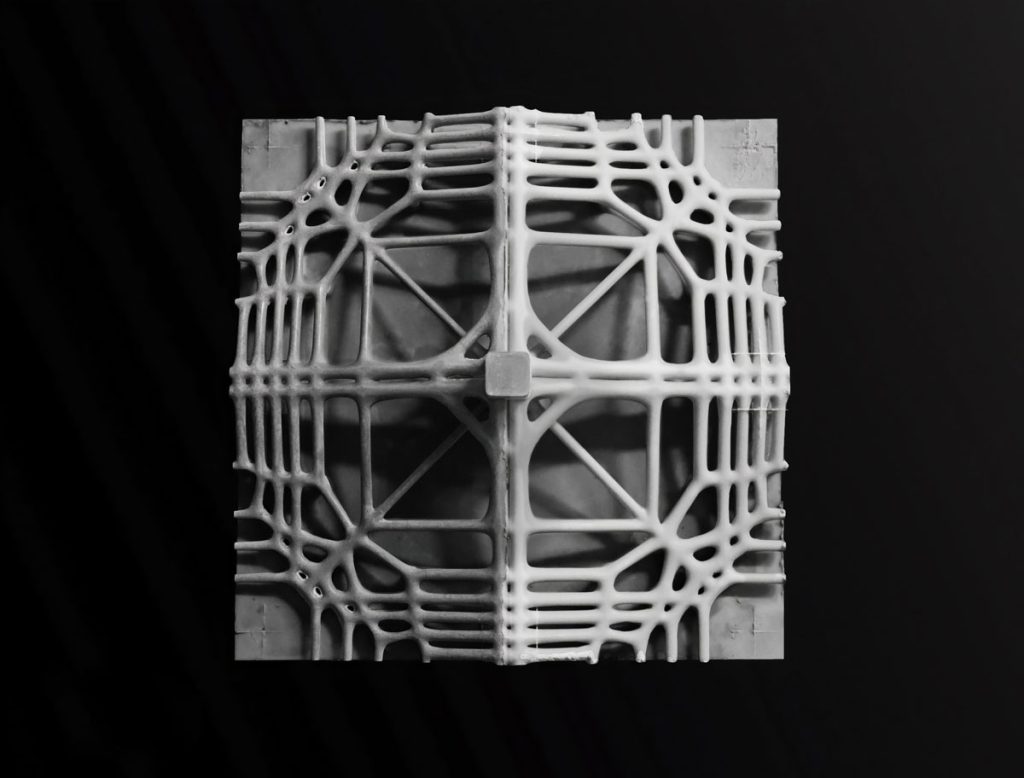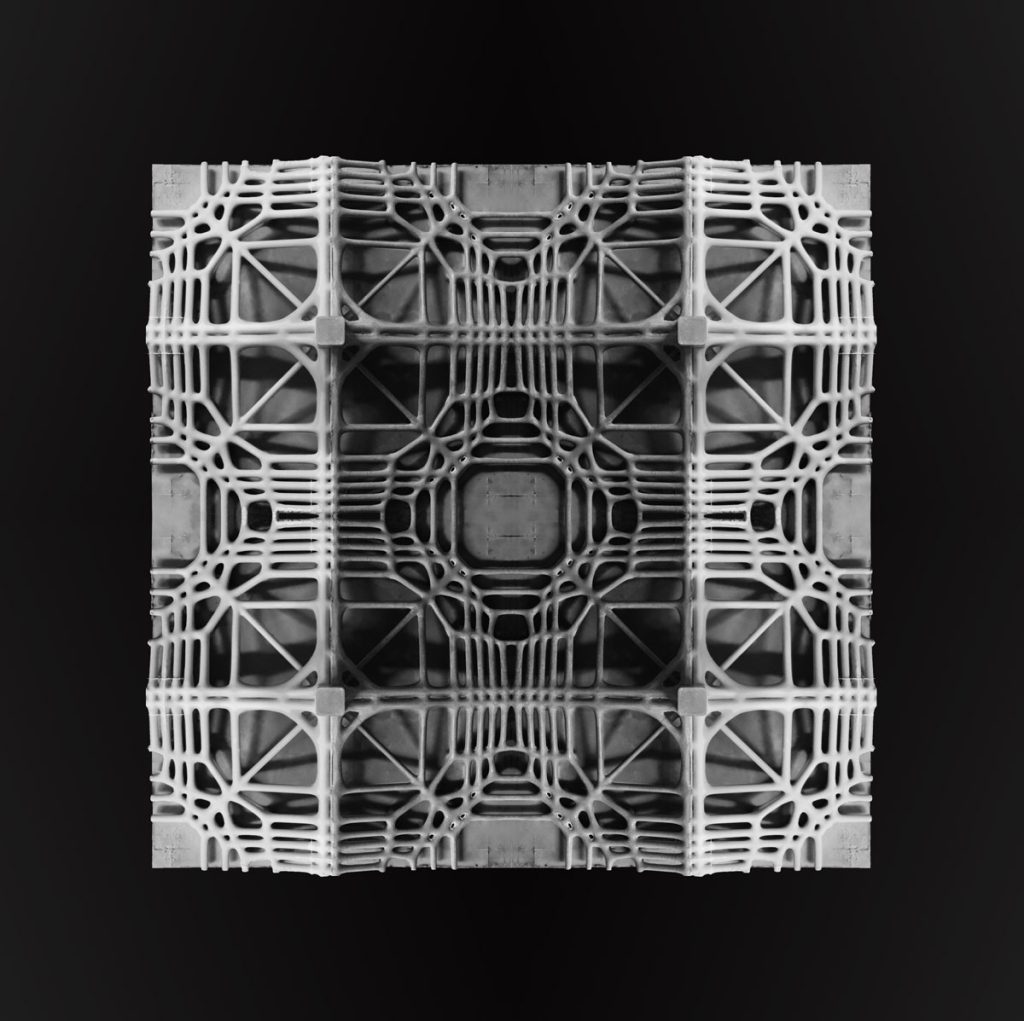
Southeast College architects created a sequence of skeleton concrete constructions utilizing 3D-printed formworks as a digital tackle Nineteenth-century French structural rationalism. Viollet-le-Duc, the daddy of material-driven design, developed the paradigm of discovering the best varieties for particular supplies to create buildings. The “materials computation” motion of ICD Universität Stuttgart has lately revived this custom, and the time period “digital concrete” was coined at ETH Zürich.
As a result of additive manufacturing expertise permits for the best diploma of fabric distribution freedom, le-dream Duc’s could come true. Southeast College researchers found that 3D-printed formworks can exactly form a cast-in-place concrete slab. The slab construction will be fully redesigned for optimum effectivity with unprecedented freedom. Concrete use can thus be considerably decreased for extra environmentally pleasant constructing building. The bizarre skeleton form is harking back to Le-famous Duc’s structural drawings.

Webone, the primary prototype, demonstrates a way for constructing biomimetic slab constructions. Most animals’ our bodies are effectively supported by a light-weight skeleton that additionally homes blood vessels and different organs. Webone is a multi-functional modular concrete slab system comprised of skeleton concrete members created by incorporating complicated 3D-printed formwork into conventional cast-in-place concrete.
Nervi’s Gatti wool manufacturing facility slab demonstrates the traces of principal bending moments, demonstrating le-principle Duc’s of articulation. Webone connects the skeleton community to the slab construction’s predominant stress traces. Every member’s diameter is proportional to its tensile/compressive stress. Earlier than pouring concrete, every member accommodates particular spacers to safe rebars alongside its central axis.
“Primarily based on Nervi’s methodology, we attempt to enhance the skeleton’s structural energy and concurrently use its void components to include constructing providers like airducts,” mentioned ZOU Yufei. Compared with conventional beam slabs, webone reduces 30 p.c of the concrete whereas sustaining equal structural efficiency. The brand new slab system offers perception into the event of low-carbon and sustainable concrete constructions.

The 3DGS-Body slab system makes use of 3D graphic statics to mix aesthetics with materials effectivity of the concrete construction. The system’s topology and geometry can adapt to totally different spatial and loading situations by utilizing 3D-printed thermoplastic formworks and cast-in-place concrete.
Beginning with a polyhedral skeleton of a cruciform arch, the design course of investigates and compares numerous subdivision operations. Graphic statics generates compression-only polyframes. When utilizing engineered concrete with excessive tensile energy (e.g., ECC or UHPC), no rebars are required contained in the linear members. When in comparison with a traditional two-way slab, the optimum structural skeleton and member dimensions can save as much as 60% of the concrete.
FDM and SLA printers are used to create the multi-piece mildew. We examined numerous concrete mixtures to make sure that contemporary concrete may movement into the complicated inside of the skeleton mildew whereas balancing concrete workability and energy.


Undertaking Information
DIGITAL CONCRETE Analysis Program
Webone: ZOU Yufei, CAI Jiepeng
3DGS–Body: WU Wenxin, LIU Xinming
Director: Dr. Sc. HUA Hao
Institute of Architectural Algorithms & Purposes
Southeast College